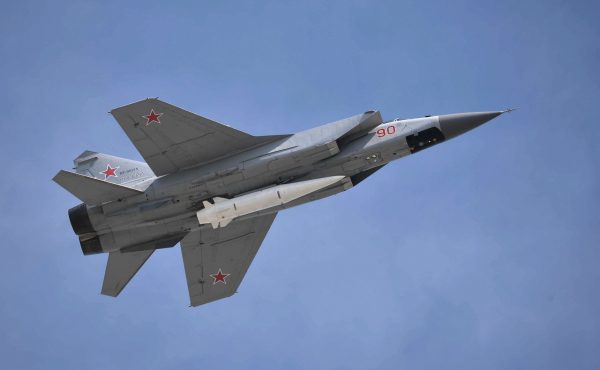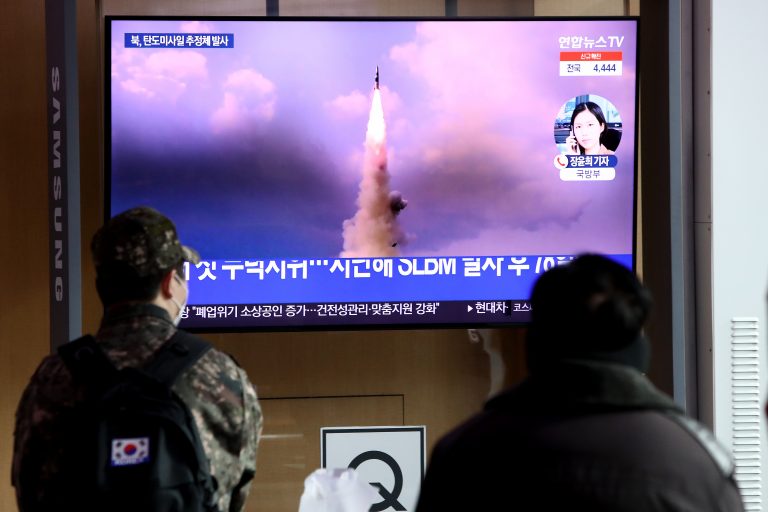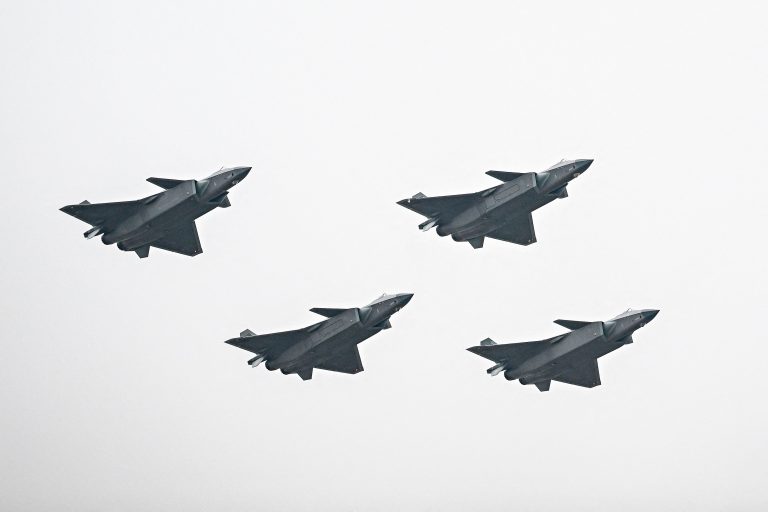Reports of successful hypersonic missile tests have emerged from Russia, China, and even North Korea. What are these missiles capable of and with this technology, in the hands of rogue states and aggressive regimes, what are the implications?
Over the past several years the governments of Russia, China and the United States have invested billions of dollars in the development of hypersonic missiles. So far, Russia and China have demonstrated the technology and North Korea has claimed they have, though experts question the validity of the latter’s claims.
Modern hypersonic missile tech
Speeds over Mach 1 — the speed of sound — are considered supersonic, while Mach 5 and above is hypersonic speed. While many military combat aircraft are capable of supersonic flight, most transport planes and airliners fly at between 500 and 600 miles per hour (less than Mach 1) to conserve fuel and avoid roaring sonic booms.
Hypersonic aircraft have been around for decades since the X-15, a small rocket plane developed for NASA. This manned aircraft first flew in 1959 and achieved a top speed of 4,520 miles per hour — 6.7 times the speed of sound.
Ballistic missiles, which launch vertically and follow an arcing trajectory to their targets, travel even faster, achieving speeds of up to Mach 20 in their descent.
Success
You are now signed up for our newsletter
Success
Check your email to complete sign up
These missiles are easily detected and their flight path is highly predictable. The cruise missile, so named because it flies horizontally like a normal aircraft, is much more maneuverable, but also much slower.
The difficulty of developing a weapon that possesses the speed of a ballistic missile and the maneuverability of a cruise missile eluded researchers during the Cold War, but today’s militaries may be overcoming this challenge.
Reports have emerged that this year, Russia will have a hypersonic missile that can reach speeds of up to Mach 9. That’s 6,669.87 miles per hour, meaning this new technology could deliver a payload between New York City and Los Angeles in just under 37 minutes.
READ MORE: China’s Nuclear-Capable Hypersonic Missile Test Takes Washington by Surprise
Missiles traveling at such blistering speeds do not even need an explosive payload to cause significant damage. The kinetic energy these missiles create could destroy many targets without the need for an explosive warhead.
Most critically, modern hypersonic missiles would not need to follow a set trajectory like ballistic missiles, the first of which were used in World War II by Nazi Germany.
Due to their very high speeds, ballistic missiles are already difficult to devise countermeasures; a hypersonic missile traveling on an unpredictable flight path would be all but impossible to shoot down using presently conceivable air defense technology.
Russian dominance in hypersonic technology

Based on what information is available to the public, Russia is the leading power in hypersonic missile technology.
Sputnik quoted Russian President Vladimir Putin as saying that “We have now tested, and successfully, and from the beginning of the year [2022] we will be armed with new sea-based hypersonic missiles, Mach 9 [speed].”
Citing perceived threats from NATO countries, Putin claimed that “we have been forced, I want to emphasis this, we have been forced to start developing hypersonic weapons.” The Russian leader also asserted that the development of this technology was partially in response to reports that NATO countries have deployed MK-41 launchers in European nations within striking distance of Russian territory.
The MK-41 launcher, or Mark 41 Vertical Launching System (Mk 41 VLS) is a shipborne launching system which provides a rapid-fire launch capability. The system can fire an array of missiles including the RIM-66 Standard, the RGM-109 Tomahawk and the RUM-139 VL-ASROC anti-submarine missile, among others.
Putin also claimed that the development of the tech was justified, saying that the Russian nation has been detecting more than 50 NATO reconnaissance aircraft and drones near the Russian border, every week for some time, Republic World Reported.
In November 2021, Russia reportedly tested its Zircon hypersonic weapon, “hitting a target some 215 nautical miles away,” Fox News reported.
Chinese capabilities
In August last year, China successfully tested a Fractional Orbital Bombardment (FOB) nuclear-capable hypersonic glide vehicle much to the surprise of the U.S. intelligence community. The tests reportedly involved a hypersonic glide vehicle that circled the globe and nearly hit its target.
A person familiar with the test told the Financial Times, who first reported on the test, “We have no idea how they did this.”
Global Times, a Chinese Communist Party (CCP) mouthpiece, wouldn’t confirm the Financial Times report; however it noted that “the U.S. generally has the ability to monitor global missile launches.”
Paul Bernstein and Dain Hancock with the Georgetown Journal of International Affairs wrote in January 2021, “Beijing is making a major investment in hypersonic missiles. China’s leadership sees this technology as an important element of its regional warfighting strategy and possibly its strategic deterrent. China possesses one operational hypersonic missile, has tested several others, and maintains an active research and development program.”
The development of this tech has allowed China to deploy weapons at low altitudes, making it difficult for U.S. satellites to track.
The United States conducted a new hypersonic weapons test in September of last year, completing its first successful test since 2013. However, a follow-up test in October ended in failure. In the face of this, the U.S. Army has emphasized “the capability of its Hypersonic Air-Breathing Weapon Concept (HAWC), which the Air Force says can operate at Mach 5 speeds ‘and beyond,’” Fox News reported.
The U.S. has been focusing on counter-terrorism and counter-insurgency efforts for nearly two decades, leaving the development of hypersonic technologies on the backburner.
Lockheed Martin currently has four hypersonic weapons in development; however, it is unclear when or even if this technology will come to fruition.
North Korean claims
According to South Korea’s Joint Chiefs of Staff (JCS), North Korea fired an “apparent” hypersonic missile into the waters off its east coast from Jagang Province at 7:27 a.m. on Jan. 11, The Diplomat reported. The launch came six days after North Korea fired another hypersonic missile on Jan. 5 which reportedly flew more than 700 kilometres (435 miles) at a maximum speed of Mach 10. The missile reached a top altitude of approximately 60 km (37.28 miles), JCS said.
Despite observing this performance, the JCS is not labeling the technology as “hypersonic.”
“Even the improved performance seen on Tuesday was not enough to recognize the North’s claim that it has successfully tested two hypersonic missiles in less than a week,” The Diplomat reported.
On the Friday following the test, South Korea appeared to downplay the capability of the North’s second hypersonic missile test saying that Pyongyang “exaggerated” its performance.
It’s not surprising that South Korea would question the North’s claims. The North also claimed this week that Kim Jong Un’s father, Kim Jong II, invented the burrito in 2011, shortly before he suffered a fatal heart attack.

Implications
Hypersonic weapons technology in the hands of rogue regimes like North Korea could no doubt wield catastrophic consequences. North Korea already represents an immediate threat to its neighbors — South Korea and Japan — and should the regime wield hypersonic missiles it could strike either nation with little to no warning.
Despite being the apparent leader in hypersonic missiles, Russia already possesses the most nuclear weapons of any country, so its development of hypersonic missiles does not drastically change the balance of power in Europe.
Chinese deployment of hypersonic weapons strengthens the CCP vis-a-vis the U.S and its allies, since the Chinese regime’s current nuclear arsenal is not large or sophisticated enough to threaten the United States with overwhelming destruction.
In terms of conventional warfare, hypersonic missiles in China’s inventory would pose a greater threat to U.S. ships and bases in the West Pacific.
According to a former Pentagon weapons developer, the successful tests by Beijing “introduces tactical and strategic threats to the United States and its Pacific allies of great consequence,” the National Interest (NI) reported.
Dr. Michael Griffin, former Under Secretary of Defense for Research and Engineering told NI that if “China establishes any kind of hypersonic weapons overmatch against the United States, it might be able to block U.S. and allied forces from approaching certain vital areas such as Guam and Taiwan.”
Griffin said that if China has an arsenal of operable hypersonic weapons, the U.S. simply would not have the defenses to counteract these new missiles. Defending allies in the West Pacific, such as Taiwan, would become even more difficult.
He believes that Beijing may now have the ability to “block” U.S. and allied forces from entering waters near Taiwan and Guam.
To date, the only defense against a massive hypersonic missile attack would be to ensure a catastrophic commensurate response or, in other words, a nuclear response.
“In most if not all circumstances, there would be virtually no real defense against an incoming salvo of enemy ballistic, nuclear and hypersonic weapons. Sheer volume alone would likely overwhelm any kind of defense apparatus…Deterrence through an assured responsive strike in the event of attack may be the only way to prevent a major assault with hypersonic weapons,” The National Interest wrote in a blog post.
“Clearly the Chinese today are ahead of us in certain aspects of hypersonic offensive capability…We not only need to match but overmatch their offensive capability so they understand they are just as hostage as we are,” Griffin said.
Leo Timm contributed to this report.













